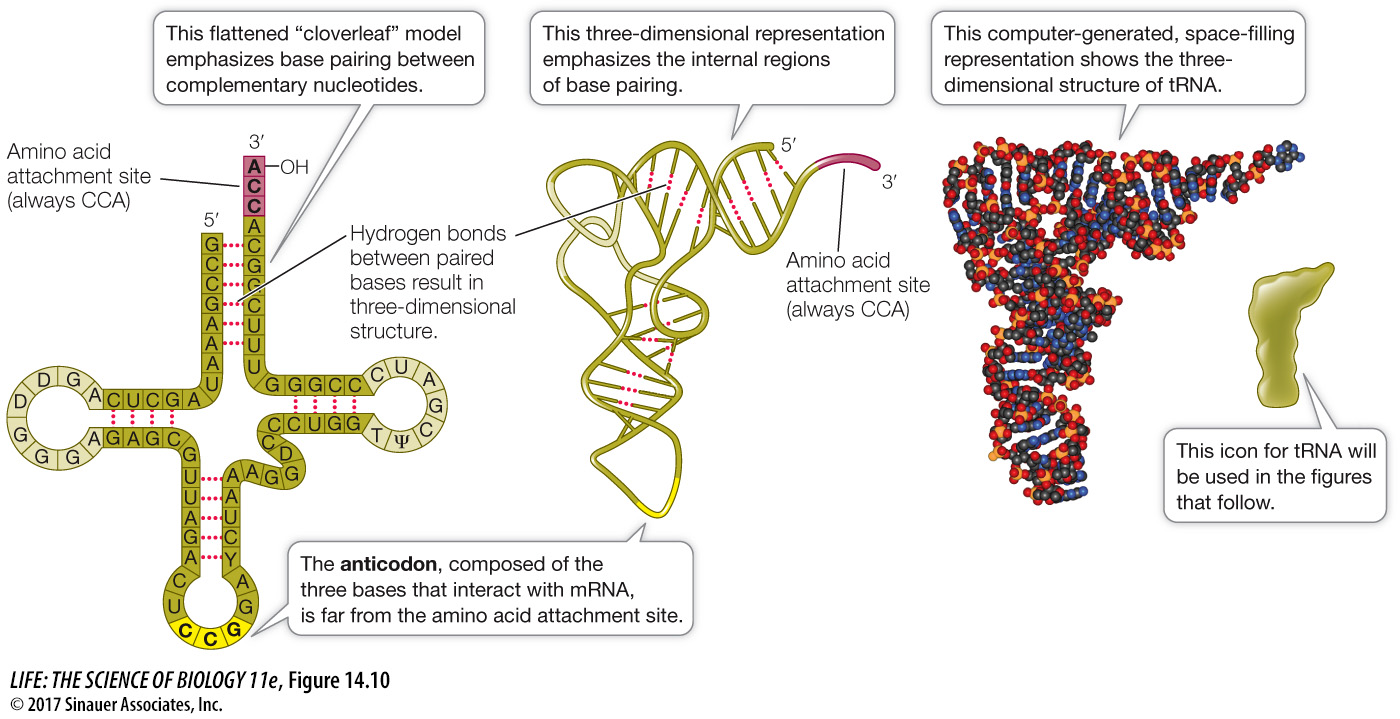A transfer RNA carries a specific amino acid and binds to a specific mRNA codon
There is at least one specific tRNA molecule for each of the 20 amino acids. Each tRNA has three functions that are fulfilled by its structure and base sequence (Figure 14.10):
tRNAs bind to particular amino acids. Each tRNA binds to a specific enzyme that attaches it to only 1 of the 20 amino acids. The covalent attachment to an amino acid takes place at the 3′ end of the tRNA. When it is carrying an amino acid, the tRNA is said to be “charged.”
tRNAs bind to mRNA. At about the midpoint on the tRNA polynucleotide chain there is a triplet of bases called the anticodon, which is complementary to the mRNA codon for the particular amino acid that the tRNA carries. For example, the mRNA codon for arginine is 5′-CGG-
3′, and the complementary tRNA anticodon is 3′-GCC- 5′. Like the two strands of DNA, the codon and anticodon bind together via noncovalent hydrogen bonds. tRNAs interact with ribosomes. The ribosome has several sites on its surface that just fit the three-
dimensional structure of a tRNA molecule. Interaction between the ribosome and the tRNA is noncovalent.

Recall that 61 different codons encode the 20 amino acids in proteins (see Figure 14.5). Does this mean that the cell must produce 61 different tRNA species, each with a different anticodon? No. The cell gets by with about two-